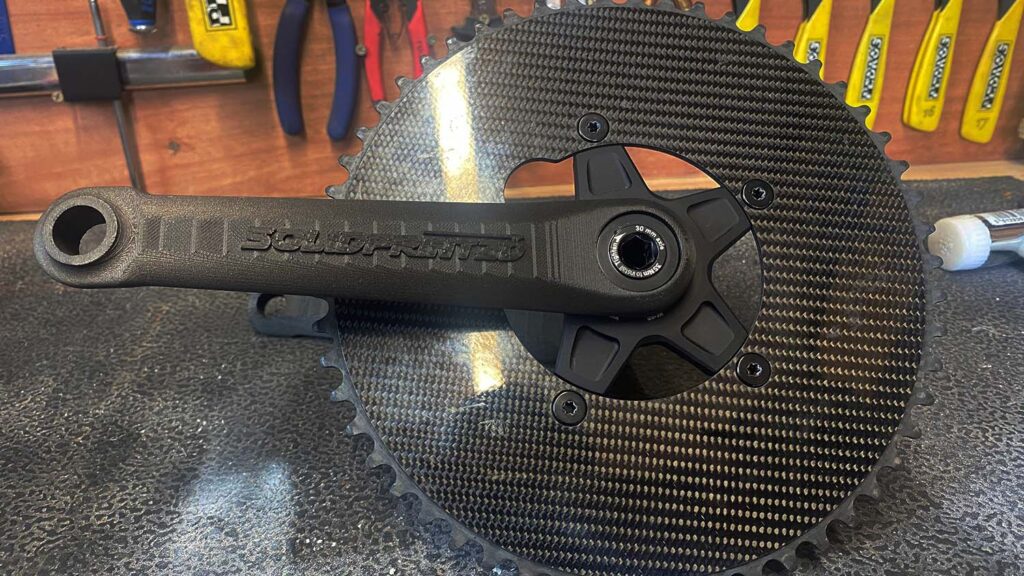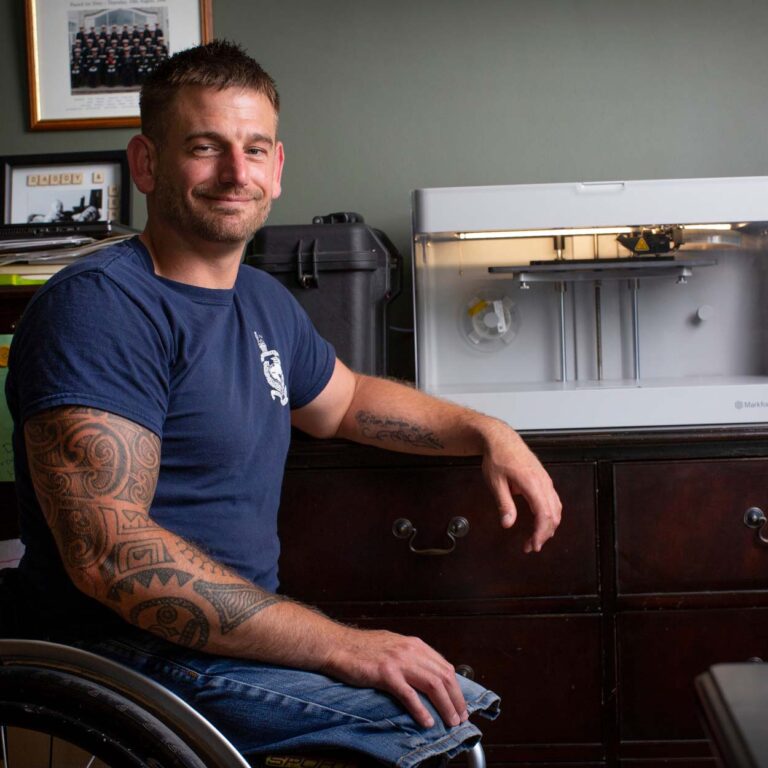For para-athletes relying on adaptive equipment to compete, accessibility to design tools and 3D Printing can mean the difference when chasing glory. Markforged EMEA engineering applications manager Jeremy Drew explains what the brand and its partners have been doing to assist athletes
With the Paralympics fast approaching, countries are playing catch up from the myriad of delays caused by COVID and deciding their national teams to compete in Tokyo this year. As with all sport, the difference between winning a gold, silver, bronze, or no medal at all comes down to fractions: of seconds in speed and grams in weight.
All para-athletes rely on adaptive equipment to compete – whether it’s a tandem bike made for speed for visually impaired cyclists, handbikes or racing wheelchairs for competitors with limb loss. These adaptations come at a cost – both in added weight and the high price tag associated with the customisation needed to ensure the equipment is designed to meet the individual requirements of each athlete.
3D printing is helping to revolutionise competition for para-athletes, making the impossible possible and levelling the playing field for any athletes with a desire to compete.
The mobility requirements of every para-athlete are different, which means there is no such thing as ‘off-the-shelf’ when it comes to their competitive equipment. It needs to be rigid, lightweight and built for speed, accuracy and to maximise mobility – all of which requires at least some level of customisation.
Some athletes prefer to make modifications to incorporate trusted branded parts to suit their needs. This approach can help to keep costs down and can make race-side support easier, but is still not without its challenges. Avid cyclist, application engineer and co-owner of Stockholm-based Markforged partner 3D Verkstan, Patrik Rosen – together with head of the 3D Verkstan Studios group, Alicia Lindahl – has been helping support local para-athletes.
With a view to avoiding price tags of up to £3,000 per custom part, they have been designing, 3D printing and testing prototypes that work alongside standard Shimano parts to modify the tandem cycle drivetrain for a blind cyclist and her sighted race pilot.
The iterative process combines metal with carbon fibre to create a strong, lightweight crank set that the athletes continue to test, tweak and build during qualifying races. It’s a work in progress, but they hope to land on the right balance of weight and strength to print the final, race-ready part that can withstand the rigours of competition.
Materials matter
In addition to being a British champion para-triathlete and former marine commando, Joe Townsend is a self-taught 3D printing user. Hand cycling and wheelchair racing at high speeds using equipment not designed for his body was taking its toll and he realised that custom equipment was the only way to avoid ongoing injuries and a second reconstructive shoulder surgery
Using 3D printing not only helped cut the cost of custom equipment, but allowed him to design and produce his own bespoke adaptive parts for himself and other athletes.
Every ounce or gram of weight matters when it comes to elite level competition and getting the weight to strength ratio is essential. After initially experimenting with standard thermoplastics, Joe realised he needed a stronger, lighter material.
Markforged’s UK partner, SolidPrint 3D introduced him to continuous carbon fibre printing, which proved ideal – providing the strength and durability beyond what thermoplastics could offer, with a flexibility the stiff plastic could not.
The weight to stiffness ratio continuous carbon fibre could achieve was also well beyond the performance welded aluminium could provide.
Joe purchased a Markforged printer and has not looked back. So far, he has designed a custom crankarm for his handbike with the perfect distribution of fibre to ensure high performance and the strength he needs to withstand the rigours of competition at the highest levels. Joe has also created an array of custom gloves for wheelchair racing designed to provide the best ergonomic support and grip for his hand – no matter the climate or weather.
And recognising that he was not alone in needing custom parts, Joe has started JT Custom Adaptive, using 3D printing to design bespoke hand grips parts for other para-athletes at a lower price point. Already shipping worldwide, Joe hopes to expand his offering to reach anyone in need of custom equipment.
These are just a few examples of how 3D printing is supporting mobility and inclusion in sport. The technology is opening doors for competitors of all types – not only by making bespoke modifications and custom equipment more accessible, but more cost effective. Advances in the technology and materials coupled with its ability to create strong, flexible customised parts mean that 3D printing will continue to go hand-in-hand with para-athletics.
As well as helping promote inclusion in sport, technologies like Markforged’s are playing an instrumental role in advancing mobility, helping to improve accessibility and freedom of movement for those who need it.









